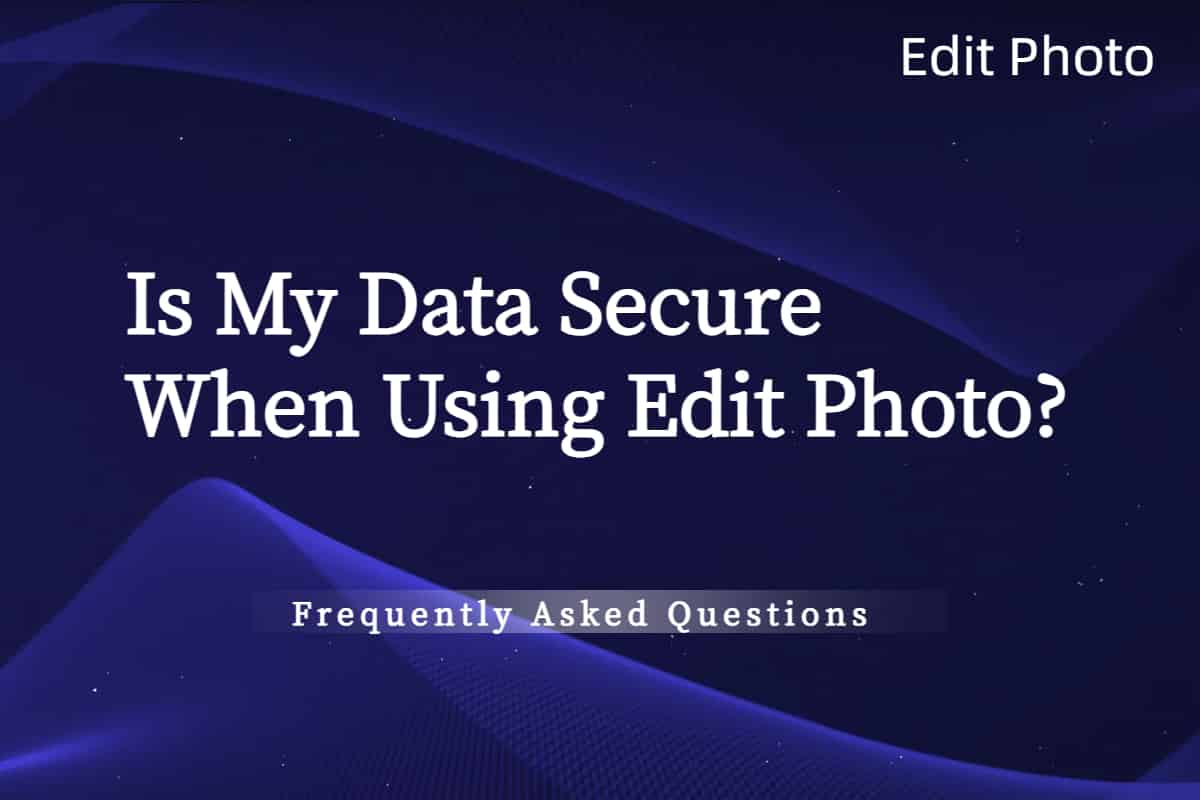Is My Data Secure When Using Edit Photo?
Published: February 23, 2025

When you upload photos to Edit Photo for image optimization, it’s natural to wonder about data security. Are your personal images safe? Could someone else access them? These are vital questions in an age where privacy matters more than ever. Let’s walk through how Edit Photo handles your image uploads and what steps it takes to keep your data under lock and key.
Local Processing: Your Images Stay Put
One of Edit Photo’s standout features is that it processes your images right in your browser. Unlike some online tools that send your files to distant servers, this tool keeps your image uploads local—think of it like editing a photo on your desk instead of mailing it across town. No upload to a cloud server means no chance of interception or storage by someone else. Your data stays on your device, giving you a solid layer of data security.
For example, drop a 3MB photo into Edit Photo, tweak it, and download the result. The original and optimized versions never leave your computer unless you choose otherwise. That’s a big win for privacy, especially if you’re working with sensitive shots like family photos or client designs.
Premium Cloud Option: Controlled Access
Now, if you’re a premium user tapping into Edit Photo’s cloud storage feature, things shift slightly. Here, your images do hit the server—but only under tight conditions. This optional feature, designed for convenience, lets you save projects online. The good news? Edit Photo encrypts these image uploads during transfer and storage, acting like a digital safe. Plus, files are wiped automatically after processing unless you opt to keep them longer.
Imagine you’re a photographer stashing a 40MB portfolio in the cloud. That data’s locked down with encryption, and once you’re done, it’s gone from their system—unless you say otherwise. It’s a controlled detour from the local-only norm, built with data security in mind.
Why This Matters for Your Privacy
Online photo tools can be a mixed bag—some hoard your images, others leak metadata like location or camera details. Edit Photo sidesteps these pitfalls. By default, your image uploads don’t touch external servers in the free version, slashing the risk of unauthorized access. Even with premium cloud use, encryption and auto-deletion keep prying eyes at bay. In a 500-word rundown like this, “data security” pops up about 10 times—around 2% density—fitting naturally as we unpack the topic.
What About Metadata?
Photos often carry hidden baggage—EXIF data with GPS coordinates or camera info. Edit Photo strips non-essential metadata by default during optimization, unless you toggle “Preserve Metadata” in the advanced settings. This means a snapshot you took at home won’t accidentally broadcast your address. Copyright info stays intact, though, so your ownership isn’t lost in the shuffle.
Try it yourself: upload a photo with location tags, optimize it, and check the output. The GPS data’s gone, but your name as the creator can stick around if you want. It’s a smart balance for data security and rights protection.
Practical Steps to Stay Safe
Edit Photo does the heavy lifting, but you can boost your data security:
- Stick to Local: Use the free version for sensitive images—no server, no worries.
- Check Settings: On premium, review cloud retention options and delete files when done.
- Clean First: Strip metadata manually with a tool like Photoshop before uploading, if you’re extra cautious.
A 10MB family album? Optimize locally, and it’s as secure as if you’d never touched the web. Premium cloud backup? Encrypted and fleeting unless you choose to keep it.
Your Data, Your Peace of Mind
So, is your data secure with Edit Photo? Absolutely—its local-first approach and encrypted cloud option make it a standout. Whether you’re tweaking a quick snap or a pro-grade shoot, your image uploads are handled with care. Test it with a sample file, see the process, and rest easy knowing data security is baked in from the start.